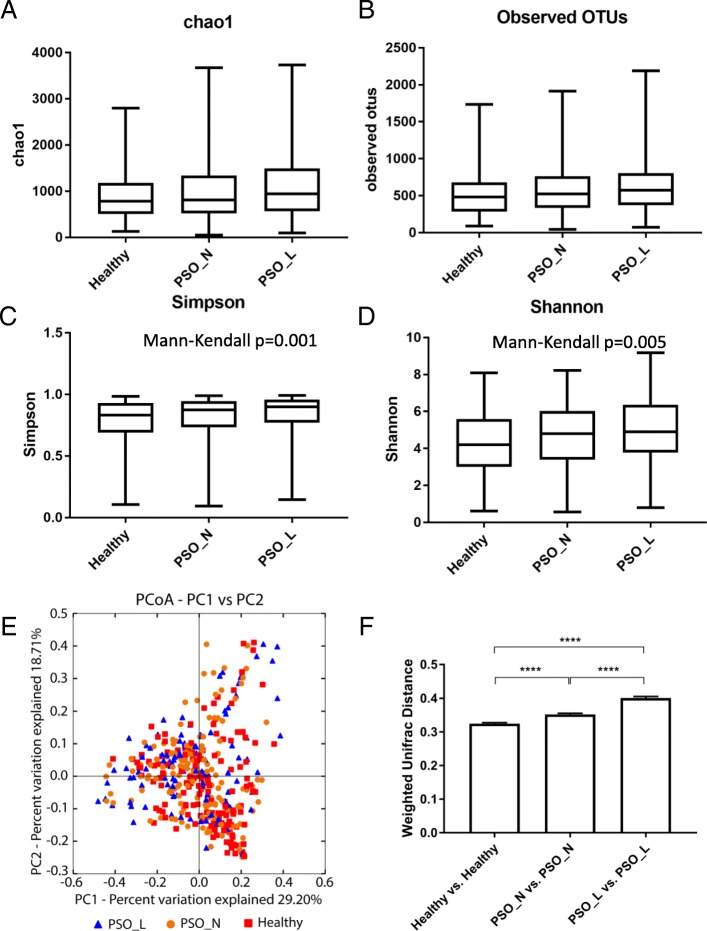Fig. 1.
Bacterial community diversity in healthy and psoriasis skin. Alpha diversity measured according to a chao1 index, b observed OTUs, c Simpson’s diversity index, and d Shannon index of healthy skin samples, psoriasis non-lesional samples, and psoriasis lesional skin samples. Significant trends of alpha diversity are identified by a Mann-Kendall trend test with p-value shown. e Principal coordinate analysis (PCoA) of the microbial community structures based on weighted UniFrac distance matrix for the first two principal axes. Each point on the PCoA plot represents a skin microbiome sample (red square = healthy, blue triangle = psoriasis lesional, and orange circle = psoriasis unaffected). The first principal coordinate explains 29.6% of variation, and the second principal coordinate explains 18.70% of the variation. f The average weighted UniFrac distances among samples within each disease state are shown in the box plot. The samples in the psoriatic lesional group are more heterogeneous than samples from healthy or psoriasis unaffected groups (one-way ANOVA with Tukey correction, ****p value < 0.0001)

